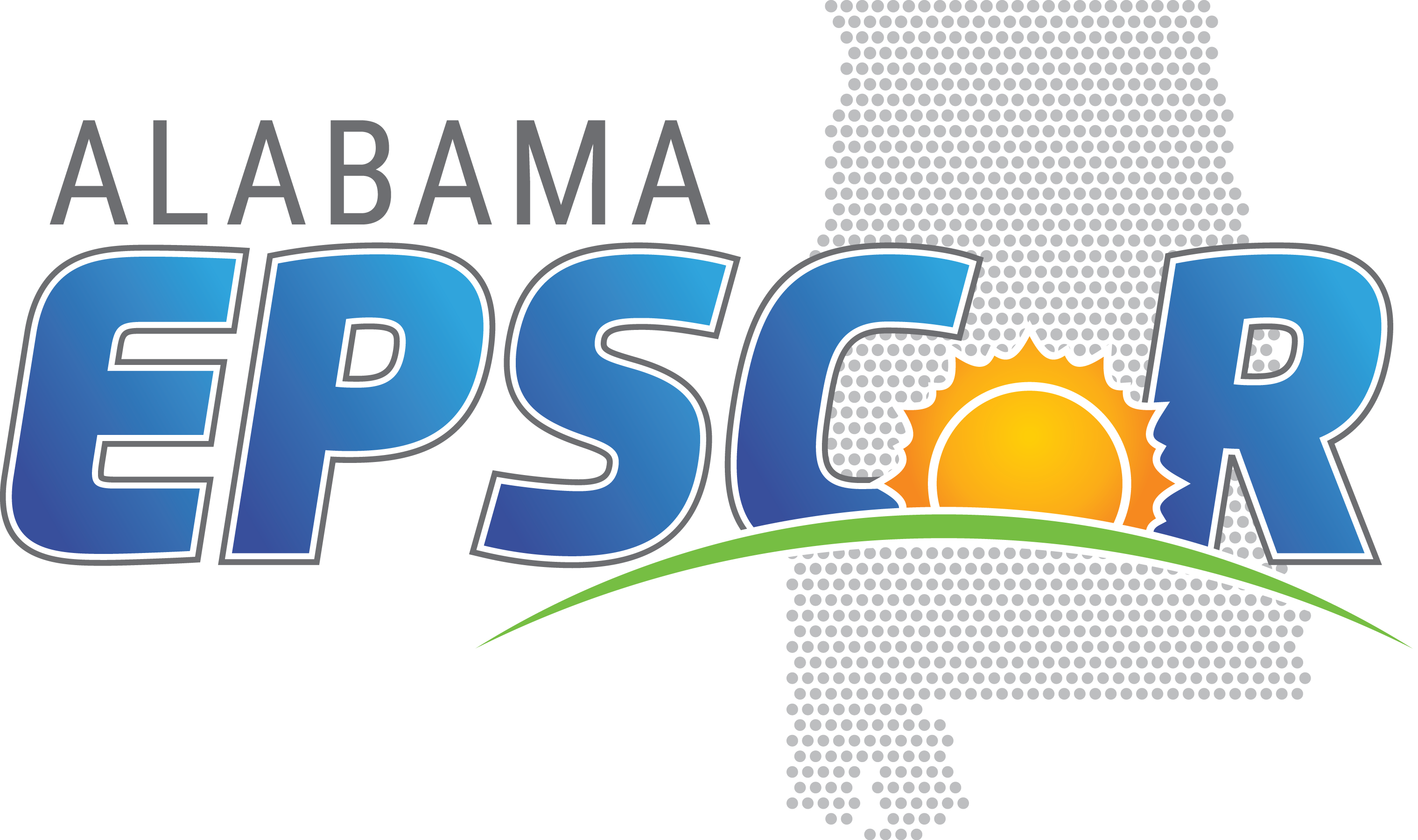The National Science Foundation
NSF EPSCoR began in 1979 as a federal-state partnership designed to help America maintain its global leadership by capitalizing on talents and resources available in all states of the union. EPSCoR enhances research competitiveness of STEM (Science, Technology, Engineering, and Mathematics) in targeted jurisdictions. The goals of NSF EPSCoR include: catalyze research capabilities across and among jurisdictions, establish STEM professional development pathways, broaden participation of diverse groups in STEM, effect engagement in STEM at national and global levels, and impact jurisdictional (state) economic development.

Research Infrastructure Improvement (RII) grants
Alabama researchers are eligible for four NSF EPSCoR Research Infrastructure Improvement (RII) grants: Tracks 1, 2, 3, and 4, which work to improve the research and development competitiveness of researchers within the jurisdiction.

Program Overviews
NSF RII Track 1 grants are intended to improve the research competitiveness of jurisdictions by improving their academic research infrastructure in areas of science and engineering supported by the NSF and critical to the particular jurisdiction’s science and technology initiative or plan. These areas must be identified by the jurisdiction’s EPSCoR governing committee as having the best potential to improve the jurisdiction’s future research and development competitiveness. Funding level is up to $4M per year for up to five years.
NSF RII Track 2 Focused EPSCoR Collaborations must be a joint effort between two or three EPSCoR jurisdictions to build inter-jurisdictional collaborative teams of EPSCoR investigators in scientific focus areas consistent with NSF priorities. Grant period is four years. Two jurisdictions are eligible for up to $1M per year, three jurisdictions are eligible for up to $1.5M per year.
Alabama is serving as the lead in one of the six NSF RII Track 2 awards and as a collaborator in five other NSF RII Track 2 awards.
NSF RII Track 3 awards were piloted in FY 2013 and provide up to $750K for up to five years to support the strategic goal of broadening participation to improve future R&D competitiveness in EPSCoR jurisdictions. These awards emphasize the participation of underrepresented groups in STEM (Science, Technology, Engineering, and Mathematics) fields supported by NSF, these groups include underrepresented minorities, women, persons with disabilities, and those underserved in rural counties.
NSF RII Track 4, or EPSCoR Research Fellows, provides opportunities for non-tenured investigators to develop their research potential through extended collaborative visits to the nation’s premier private, governmental, or academic research centers to learn new techniques, benefit from access to unique equipment and facilities, in hopes of taking their research in new directions. It is hoped that the experience will provide a foundation for research collaborations that span the recipient’s entire career, and ultimately their institution and jurisdiction.
Alabama is eligible for NSF Co-funding. NSF Co-funding is an internal program within NSF that selects meritorious proposals to be funded through combined support between the EPSCoR office and the other seven NSF Directorates (Biological Sciences, Computer and Information Science and Engineering, Engineering, Geosciences, Mathematical and Physical Sciences, Social, Behavioral and Economic Sciences, and Education and Human Resources).
Funding Opportunities & Awards
Research Infrastructure Improvement Program Track 4
Program: NSF EPSCoR Deadline: TBD NSF RII Track 4, or EPSCoR Research Fellows, provides opportunities for…
Research Infrastructure Improvement Program Track 3
Program: NSF EPSCoR Deadline: TBD NSF RII Track 3 awards were piloted in FY 2013 and…
Research Infrastructure Improvement Program Track 2
Program: NSF EPSCoR Deadline: TBD NSF RII Track 2 Focused EPSCoR Collaborations must be a joint…
Research Infrastructure Improvement Program Track 1
Program: NSF EPSCoR Deadline: 6/1/2020 NSF RII Track 1 grants are intended to improve the research…
Co-Funding
Program: NSF EPSCoR Deadline: TBD Alabama is eligible for NSF Co-funding. NSF Co-funding is an internal…
Each award has its own requirements and funding opportunities.

